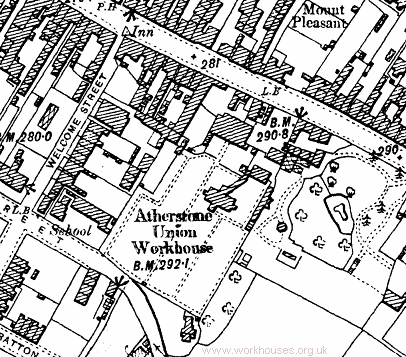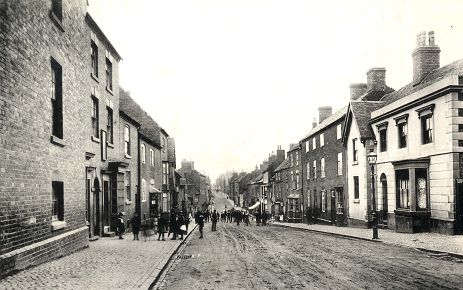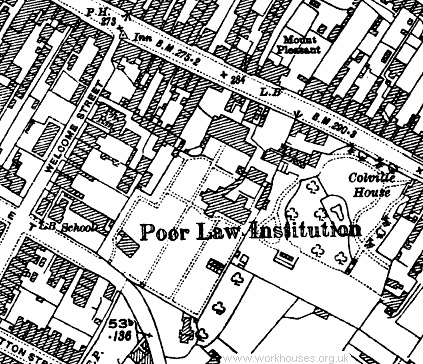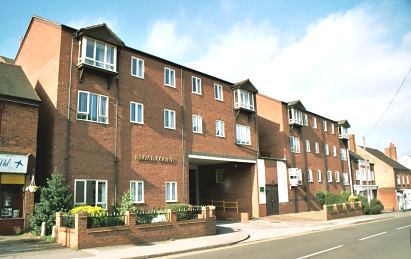Atherstone, Warwickshire
Up to 1834
A workhouse was erected in Atherstone in 1723. It stood at the south end of Long Street on the site of the present Grammar School. In 1737, the Atherstone Vestry meetings appointed twelve "Governors of the Poor" to manage a poorhouse. In 1738, Peter Davis from Wolverhampton was appointed as Master of the Workhouse which was extended in the same year. In the 1770s, the workhouse could accommodate up to sixty inmates. In the early 1800s, the inmates were employed in manufacturing cotton and in 1819, Henry Baker was employed to "undertake the management of the Cotton factory and Poor House."
After 1834
Atherstone Poor Law Union was formed on 31st March 1836. Its operation was overseen by an elected Board of Guardians, 18 in number, representing its 14 constituent parishes as listed below (figures in brackets indicate numbers of Guardians if more than one):
County of Warwick:
Ansley, Atherstone (4), Baddesley Ensor, Baxterley, Bentley, Grendon, Mancetter or Mancester,
Merivale [Merevale], Oldbury, Polesworth (2).
County of Leicester: Allerton, Fenny Drayton, Sheepy Magna, Sheepy Parva.
Later Addition: Hartshill.
The population falling within the Union at the 1831 census had been 9,489 with parishes ranging in size from Oldbury (population 80) to Atherstone itself (3,870). The average annual poor-rate expenditure for the period 1833-35 had been £5,332 or 11s.3d. per head of the population.
The Atherstone Union workhouse stood at a site acquired in 1836 on Long Street in Atherstone. The workhouse appears to have been an adaptation of an existing building as the Poor Law Commissioners authorised an expenditure of £2,500 for it be "altered and enlarged".

Atherstone workhouse site, 1903

Atherstone Long Street from the east (workhouse at left).
Courtesy of Lorna Dirveiks.
A new hospital was opened at the south of the workhouse in 1911. This was extended in 1914 when a new kitchen and Master's residence were also erected.

Atherstone workhouse site, 1923
Modern flats now occupy the former workhouse site.

Atherstone former workhouse site from the east, 2001.
© Peter Higginbotham.
Staff
Inmates
Records
Note: many repositories impose a closure period of up to 100 years for records identifying individuals. Before travelling a long distance, always check that the records you want to consult will be available.
- Warwickshire County Record Office, Priory Park, Cape Road, Warwick CV34 4JS. Holdings: Guardians' minute books (1863-1930); Accounts (1855-1930).
Bibliography
- The History of Atherstone by Brenda Watts and Eleanor Winyard (1988).
Links
- None.
Unless otherwise indicated, this page () is copyright Peter Higginbotham. Contents may not be reproduced without permission.


